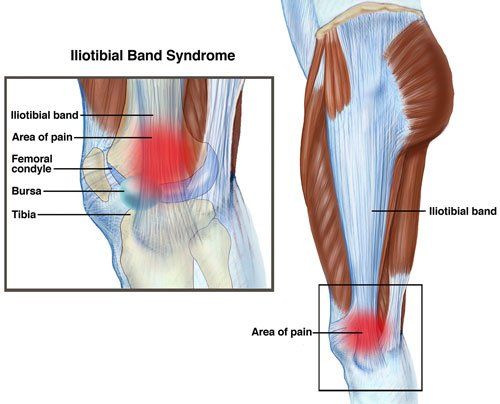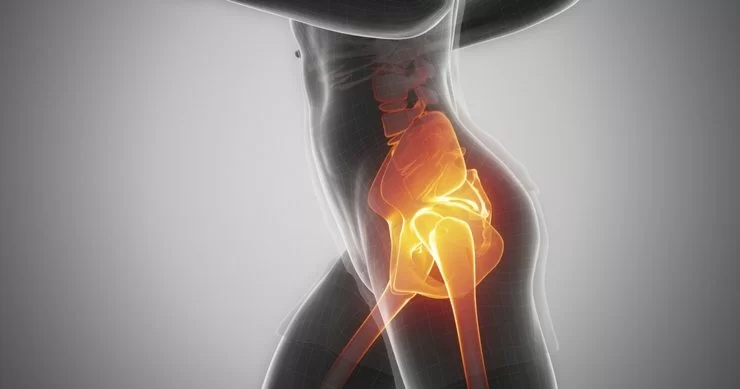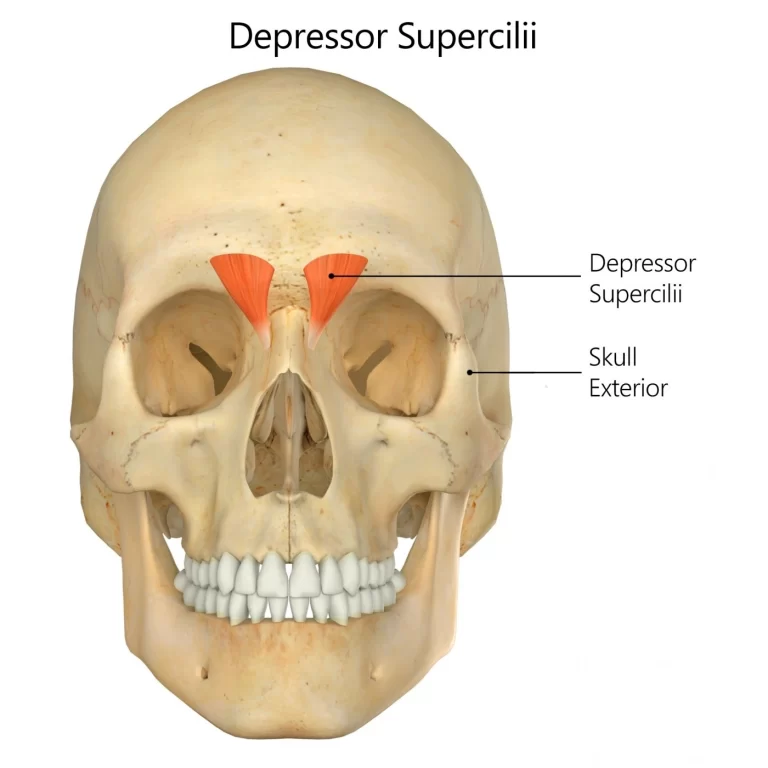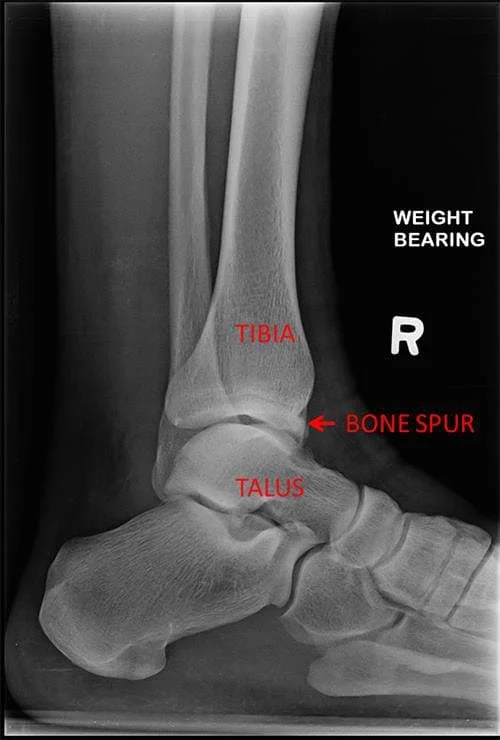Lyme Disease From Tick Bite
What is a Lyme Disease?
Lyme disease is a prevalent tick-borne illness caused by the bacterium Borrelia burgdorferi. The bite of an infected black-legged tick, which is typically prevalent in grassy and forested regions, is how humans get the disease.
The disease is most common in North America, Europe, and some parts of Asia. Early detection and treatment are crucial to preventing the progression of the disease and potential long-term complications.
Overview
The borrelia bacteria is the cause of Lyme disease. Lyme disease is typically contracted by humans from tick bites.
Most of the United States is home to ticks that may be carriers of the bacteria Borrelia. However, the northeastern, mid-Atlantc, and upper Midwest are the regions where Lyme disease is most prevalent. Additionally widespread are southern and central Canada, as well as Europe.
Spending time in grassy, brushy, or wooded areas—areas where ticks are common—puts a person at risk of contracting Lyme disease. The risk of Lyme disease can be decreased by taking precautions in these places.
The signs and symptoms of Lyme disease can vary and often mimic other conditions, making it challenging to diagnose. Common symptoms may include fever, headache, fatigue, and a characteristic skin rash called erythema migrans. If left untreated, the infection can spread to the joints, heart, and nervous system, leading to more severe symptoms such as severe headaches, neck stiffness, arthritis with severe joint pain and swelling, and facial palsy.
Lyme disease can be effectively treated with antibiotics, especially during the early stages of the infection. The standard treatment for adults is usually a two- to four-week course of oral antibiotics, such as doxycycline, amoxicillin, or cefuroxime. In some cases, intravenous antibiotics may be necessary for patients with certain neurological or cardiac complications.
Prevention is key, and it is important to take precautions when spending time in wooded or grassy areas where ticks are commonly found. This includes wearing long sleeves and pants, using insect repellents containing DEET, and performing thorough tick checks on your body and clothing after spending time outdoors.
If you suspect you have been bitten by a tick and may have contracted Lyme disease, it’s crucial to seek medical attention promptly. Early diagnosis and treatment can help prevent the progression of the disease and reduce the risk of long-term complications.
Symptoms of Lyme Disease
Likely to a mosquito bite, a tick bite can appear as a tiny, irritating lump on the skin. It is not a sign that you have an illness carried by ticks. Many individuals are not aware that they have been bitten by a tick.
Lyme disease symptoms can vary. Usually, they appear gradually. The phases, however, may overlap. Furthermore, some persons do not exhibit the usual early-stage symptoms.
Phase 1
- Rash from Lyme illness on various skin tones.
- Ruta de Lyme illness
- Early Lyme disease symptoms often appear three to thirty days following a tick bite. The symptoms at this stage of the disease are not very numerous.
- We refer to this as an early localized illness.
- One typical symptom of Lyme illness is a rash.
- However, this isn’t always the case.
- Usually, the rash starts as a single circle and gradually expands from the tick bite site.
- It could become visible in the middle and resemble a target or bull’s-eye.
- The rash is typically not unpleasant or itchy, although it frequently feels warm to the touch.
Other symptoms in stage 1 consist of:
- A fever.
- ache.
- extreme fatigue.
- stiff joints.
- Pains and aches in muscles.
- enlarged nodes of lymph.
Phase II
The Lyme illness might worsen if left untreated. Usually, three to ten weeks following a tick bite, the symptoms manifest. Stage 2 is frequently more extensive and grave. It is referred to as an early disseminated illness.
Stage 2 can incorporate include the stage 1 symptoms and the following:
- many rashes in different body areas.
- stiffness or soreness in the neck.
- weakening of the muscles of one or both cheeks.
- irregular heartbeats are caused by immune system activation in the cardiac tissue.
- pain that travels down the legs from the hips and back.
- Hand or foot pain, numbness, or weakness.
- painful edema in the eyelid or eye tissue.
- Immune system activity in the nerves of the eyes results in discomfort or blindness.
Phase 3
You can have additional symptoms in addition to those from the previous phases in the third stage. We refer to this stage as late disseminated disease.
Large joint arthritis, especially in the knees, is the most prevalent condition of this stage in the United States. Long-lasting pain, edema, or stiffness are possible.
Acrodermatitis chronic atrophicans is a skin ailment that may be brought on by the form of Lyme disease that is prevalent in Europe. The tops of the feet and the backs of the hands experience swelling and discoloration of the skin. It could also appear across the knees and elbows. Severe cases may result in joint or tissue damage.
This skin ailment may manifest many months to several years subsequent to a tick bite.
Causes of Lyme Disease
The borrelia bacteria is the cause of Lyme disease. The deer tick, commonly known as the black-legged tick, is the primary carrier of the bacterium in North America.
Lyme disease is brought on by a distinct species of Borrelia in Europe. The germs are carried by ticks. There are other names for these ticks, such as deer tick, sheep tick, and castor bean tick.
Epidemiology
The distribution of the disease’s vectors has a direct impact on the occurrence of endemic Lyme disease in North America, Europe, and Asia. The primary vector in the Northeast, Central, and Canadian regions is Ixodes scapularis, while Ixodes pacificus is more prevalent on the Pacific coast. In Europe, Ixodes ricinus is the dominant vector. Ixodes persulcatus, the taiga tick, is the vector in Asia.
United States statistics
- In the US, the most prevalent sickness spread by vectors is Lyme disease.
- Every year, more than 30,000 cases of Lyme disease are documented.
- The US Centers for Disease Control and Prevention (CDC) received reports of 33,666 cases of Lyme disease in 2018, of which 23,558 were confirmed and 10,108 were suspected.
- This is a 21% decline from 2017 data. State and local health authorities reported a record number of cases of tickborne diseases to the CDC, with Lyme disease topping the list.
- from 2016 until 2019.
- Between 2008, when the definition of a case for national surveillance was updated to include probable cases, and 2012, the incidence in the US varied between 9.86 and 12.71 instances per 100,000 people.
- Lyme disease ranked as the sixth most prevalent nationally reportable illness in 2015.
- Strict surveillance criteria are used by the CDC to monitor cases of Lyme disease (not designed for diagnosis of individual cases).
- The genuine incidence and geographic range have increased in states that conduct active surveillance, therefore the incidence has been rising over time and is not only a function of greater detection.
- The spread of the vector and the growth of deer herds are the most plausible explanations for this surge.
- According to epidemiologic statistics, the true incidence of Lyme disease may be up to ten times greater than what the CDC reports.
- The CDC’s narrow case definition, the inescapable misdiagnosis, and doctors’ propensity to underreport reportable disorders of all kinds are likely the causes of this.
- The CDC approximates that as many as 476,000 people may get Lyme disease each year in the United States.
There is a general geographic pattern to the risk of Lyme disease, with the Northeast, mid-Atlantic, and upper Midwest having higher concentrations. In the following states, the 3-year average incidence of confirmed cases was high in 2018 (i.e., at least 10 per 100,000):
- Maine – 92
- Connecticut – 36.2
- Delaware – 45.7
- Pennsylvania – 68.1
- Rhode Island – 56.4
- Vermont – 79.1
- Virginia – 10.9
- West Virginia – 24.9
- Wisconsin – 25.4
- Maryland – 18.6
- Massachusetts – 2.3
- Minnesota – 21.9
- New Hampshire – 63.8
- New Jersey – 36.6
- New York – 14.5
Moreover, Washington, DC had a high incidence rate of 8.9 incidents per 100,000 residents. It should be noted that Massachusetts has a monitoring strategy that mostly depends on laboratory reports, and the CDC does not get data on the majority of Lyme disease cases that occur in that state.
Furthermore, states adjacent to those have also reported cases of infected ticks, as have certain regions of northern California, Oregon, and Washington. All US states except Oklahoma and Hawaii reported confirmed cases of Lyme disease in 2019.
International statistics
- A large portion of the world, including Canada, Europe, and Asia, is affected by Lyme disease.
- There may be cases of Lyme disease in Australia, as reports of the illness occasionally come from more tropical regions.
- Asia has seen reports of infections with Borrelia burgdorferi in China, Korea, Japan, Indonesia, Nepal, and eastern Turkey. The two main tick species that cause Lyme disease in Europe are B afzelii and B garinii.
- According to a comprehensive analysis of borreliosis associated with Lyme disease conducted in Europe between 2005 and 2020, Belgium, Finland, the Netherlands, and Switzerland they recorded the highest occurrences (more than 100 cases per 100,000 people annually [PPY]).
- The Czech Republic, Germany, Poland, and Scotland reported incidences ranging from 20 to 40 per 100,000 PPY. In contrast, Belarus, Croatia, Denmark, France, Ireland, Portugal, Russia, Slovakia, Sweden, and the United Kingdom reported incidences of less than 20 per 100,000 PPY.
- Nevertheless, regions of nations with low overall incidence were also shown to have high local rates.
Racial differences in incidence
- Lyme disease affects people of all colors, however, it is more commonly recorded in White people.
- There is currently no known genetic basis for this difference; instead, it is most likely due to social or environmental factors (such as white people being more likely than people of other races to be exposed to ticks) and the possibility that diagnosing erythema migrans in people with darker skin is more challenging.
Age- and sexual-related variations in incidence
- There isn’t a noticeably high prevalence of Lyme disease in either sex.
- According to European reports, children between the ages of 5 and 19 are slightly more likely to contract Lyme disease than girls; yet, among individuals over 30, women are more likely to contract the illness than men.
- Males accounted for 53.1% of reported cases of Lyme disease in the United States between 1992 and 2006.
- Lyme disease has a bimodal age distribution, with the first peak occurring in children ages 5 to 14 and the second peak occurring in adults ages 45 to 54.
- Rather than reflecting any innate variation in sensitivity, this trend is typically linked to higher levels of outdoor exercise and environmental exposure in these age groups.
Tick bites
Ticks cling to their hosts’ skin in order to feed on blood. The tick continues to swell several times its normal size as a result of feeding. For several days, deer ticks can survive on the blood of their host.
Bacteria from a host, like a deer or rodent, are acquired by ticks. They never become ill. They can, however, transfer the germs to a different host. The bacteria may enter a person’s bloodstream when an infected tick feeds on them. If you remove the tick within 24 hours, there is a decreased chance that the germs may spread Lyme disease.
Ticks can carry the disease at any stage of their life. Little ticks are difficult to identify. If a baby tick bites a person, you might not notice it.
Risk factors
If a person spends time in an area where they are likely to reside, the risk of contracting Lyme disease increases. This comprises the:
Location- Lyme disease-carrying deer ticks are common. The northeastern, mid-Atlantic, and upper Midwest regions, as well as south-central and southeast Canada, are home to the majority of them. Throughout Europe, castor bean ticks can be found.
Environment-Ticks prefer to live in grassy, shrubby, or woodland settings.
the season. Infection risk is at its peak in the spring, summer, and fall. However, tick activity can occur at any temperature above freezing.
Time- The risk of infection is higher in the spring, summer, and fall. But ticks may be active any time the temperature is above freezing.
Complications
Some Lyme disease patients claim that their symptoms worsen even after receiving therapy. These persistent symptoms might involve the following:
- Lyme-arthritis
- Aches and pains throughout the body.
- fatigue that is frequent or constant.
- complaints about memory.
There is uncertainty about these situations. PTLDS, or post-treatment Lyme disease syndrome, may be identified in certain individuals exhibiting these symptoms.
This is caused by:
- Incomplete treatment.
- Reinfection with Lyme disease.
- When bacteria are killed, the immune system responds to fragments of the bacteria. Autoimmunity refers to immune system activity that harms healthy tissues.
- Conditions other than Lyme disease that have not been tested.
Diagnosis and Testing
Guidance from APHL and Analysis of Lyme Disease Serologic Test Results
In addition to identifying recommended practices for informing patients, public health organizations, and doctors about test findings, this study explains how to interpret serologic testing for B. burgdorferi correctly.
When evaluating a patient for Lyme disease, medical professionals ought to take into account:
- Lyme disease symptoms and indicators
- The possibility that the patient came into contact with disease-carrying black-legged ticks
- The potential for similar symptoms to be caused by different conditions
- Laboratory test results, when applicable.
Laboratory testing
For Lyme disease, the CDC presently advises a two-step testing procedure. The same blood sample can be used for both of the necessary stages. Further testing is not advised if the results of this initial phase are negative.
If the initial step is ambiguous or positive (sometimes called “equivocal”), the subsequent step ought to be carried out. Only in the event that both the first and second tests yield positive (or equivocal) results may the overall result be considered affirmative. (or for some tests equivocal).
Key points to remember
- The majority of tests for Lyme disease are intended to identify antibodies produced by the body in reaction to an infection.
- Patients may test negative if they were infected only recently because it can take several weeks for antibodies to develop.
- The test cannot be used to indicate a cure since antibodies typically remain in the blood for months or even years after the infection has cleared up.
- False positive test findings can be caused by infection with other diseases, such as some autoimmune, bacterial, or tick-borne illnesses.
- Certain assays yield results for both IgM and IgG antibodies. If the patient’s illness has persisted for longer than 30 days, it is recommended to overlook positive IgM results.
Tick removal and testing
Just get rid of the tick as soon as you discover it adhered to your skin. While there are a number of tick removal tools available, a basic pair of tweezers with fine tips is highly effective.
How to get rid of a tick
- As near the skin’s surface as you can, grab the tick with clean, fine-tipped tweezers.
- Apply consistent, even pressure as you pull upward.
- The mouthparts of the tick may break off and stay in the skin if you twist or jerk it.
- If this happens, use tweezers to remove the mouthparts.
- If using tweezers is difficult, leave the mouth in place and let the skin recover.
- Use rubbing alcohol or soap and water to thoroughly clean the bite area and your hands once the tick has been removed.
- Never use your fingers to squash a tick.
- A live tick can be disposed of in one of the following ways: flushing it down the toilet, wrapping it firmly with tape, putting it in alcohol, or placing it in a sealed bag or container.
- An illustration in the clipart style demonstrating how to remove a tick with tweezers
Follow-up
See your doctor if, within a few weeks of having a tick removed, you experience a fever or rash:
Inform the doctor where you most likely picked up the tick when it bit you, and the details of your most recent tick bite.
How Is Lyme Disease Treated?
- You will take antibiotics for three weeks to ten days if you have early-stage Lyme disease.
- The three most often used ones are doxycycline, cefuroxime, and amoxicillin.
- Your infection will almost always be cured by the antibiotics.
- If not, you may receive injections or oral medication for further antibiotics.
- You may require oral antibiotics to cure symptoms like weakening face muscles and irregular heartbeat if you fail to treat your Lyme infection.
- If you have more serious cardiac issues, meningitis, or inflammation in your brain and spinal cord, you could require antibiotics.
- The doctor may administer antibiotics by injection or by mouth if your Lyme is advanced.
- You will receive therapy for arthritis if it results from it. Post-treatment Lyme disease condition has no known cure.
Which places Are More Likely to Have Lyme Disease?
From the Northeast and upper Midwest, the tick that causes Lyme disease has been spreading to the south and west of the United States, Mexico, and Canada.
The states with the highest number of cases recorded in 2020, according to the CDC, were Wisconsin, Maine, New Jersey, Pennsylvania, and New York.
Why are ticks more prevalent now than they were previously?
Lyme disease is spreading for a number of reasons. Among them are:
- Trees are being cultivated, particularly in the Northeastern United States.
- Extreme heat or cold and climate change
- Individuals departing from big cities
- More interactions with white-tailed deer, which are the preferred route of transit for black-legged ticks
- A large number of trees were felled in the previous century to make room for construction.
- As a result, there were fewer deer. However, more trees have been planted in recent decades, which has increased the number of ticks and deer.
- Since ticks don’t travel far and have a two to three-year lifespan, noticeable alterations take time to manifest.
Lyme disease is spreading for a number of reasons. Among them are:
- Many trees are currently being planted, especially in the Northeastern region of the United States. Extreme heat or cold and climate change
- Individuals departing from big cities
- More interactions with white-tailed deer, which are the preferred route of transit for black-legged ticks
- A large number of trees were felled in the previous century to make room for construction.
- As a result, there were fewer deer. However, more trees have been planted in recent decades, which has increased the number of ticks and deer.
- Since ticks don’t travel far and have a two to three-year lifespan, noticeable alterations take time to manifest.
- Deer and white-footed mice are carriers of Lyme disease which is transmitted to ticks when they are bitten.
- Due to the depletion of their natural habitats, these animals are now living in closer proximity to humans, which increases the risk of infection.
- As the climate warms, some individuals spend more time outside.
- That raises the odds of being bitten, particularly in areas where Lyme disease is usual.
- That doesn’t mean you should avoid outdoor activities. But take steps to prevent tick bites and check for them, just in case.
FAQ
To what extent can a tick bite cause Lyme disease?
The Lyme disease bacteria is not present in every tick. It can infect between less than 1% and more than 50% of ticks, depending on the area. The majority of tick bites are not harmful, but some species can spread diseases that are fatal.
Is there a cure for tick-borne Lyme disease?
While oral antibiotics for two to four weeks can cure most cases of Lyme disease, patients may experience pain, exhaustion, or cognitive difficulties for up to six months after therapy ends. “Post-treatment Lyme Disease Syndrome” is the term used to describe this illness (PTLDS).
Are all ticks Lyme carriers?
The black-legged tick, often known as the deer tick, is the vector by which Lyme disease is spread through biting. (Not all ticks are infected with the bacteria, and Lyme disease does not always occur after a tick bite.
How bad of a sickness is Lyme?
Lyme Disease | CDC | Lyme Disease
Infections can spread to the heart, neurological system, and joints if they are not treated. A patient’s symptoms, physical characteristics (such as a rash), and potential exposure to infected ticks are used to diagnose Lyme disease. Testing in the lab can be beneficial if done properly and according to established protocols.
What symptoms indicate a tick bite?
It’s typical to have a tiny bump or redness at the location of a tick bite that happens right away and looks like a mosquito bite. This inflammation is not indicative of Lyme disease and usually goes away in 1-2 days. Other organisms that could result in a different kind of rash can be carried by ticks.
References
- Lyme disease – Symptoms and causes – Mayo Clinic. (2023, February 10). Mayo Clinic. https://www.mayoclinic.org/diseases-conditions/lyme-disease/symptoms-causes/syc-20374651
- Lyme disease treatment | CDC. (2022, March 1). Centers for Disease Control and Prevention. https://www.cdc.gov/lyme/treatment/index.html
- Lyme Disease: Important facts to know. (2003, December 3). WebMD. https://www.webmd.com/rheumatoid-arthritis/arthritis-lyme-disease
- Meyerhoff, J. O., MD. (n.d.). Lyme Disease: Practice Essentials, background, etiology. https://emedicine.medscape.com/article/330178-overview?form=fpf#a5








2 Comments